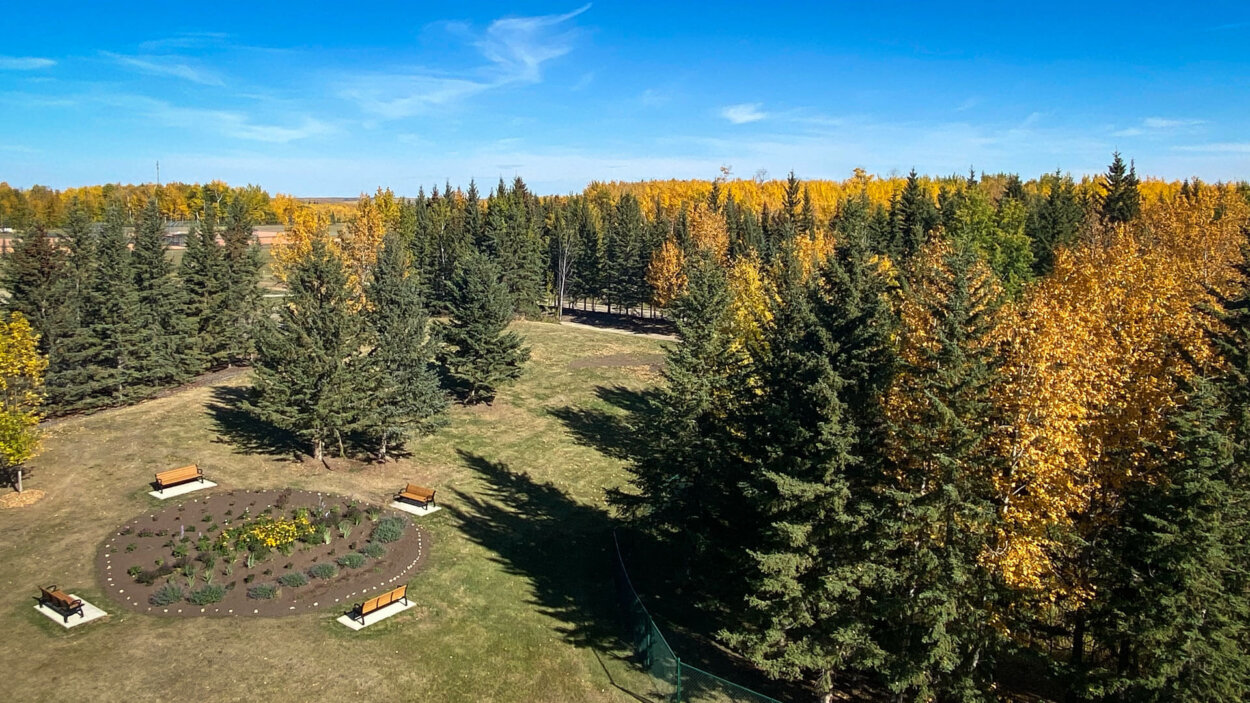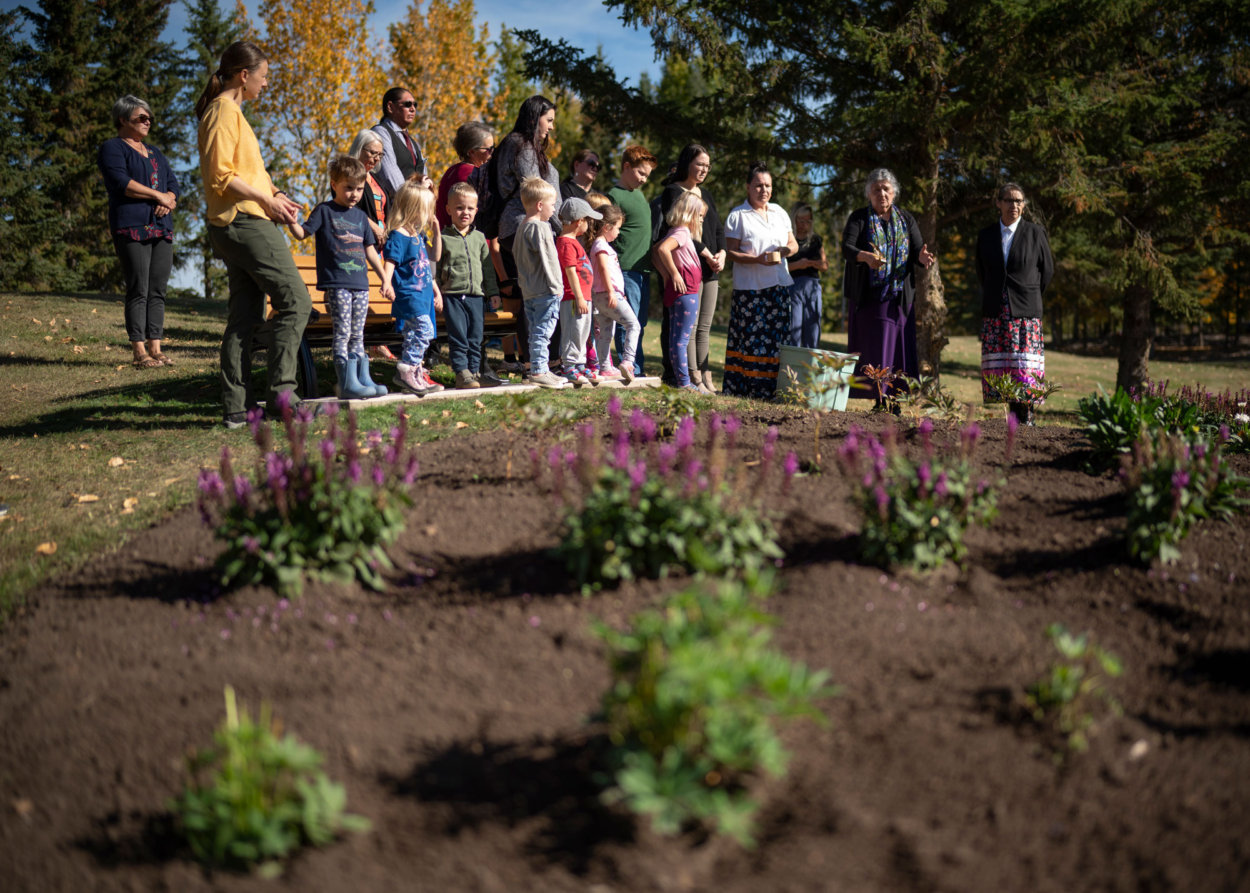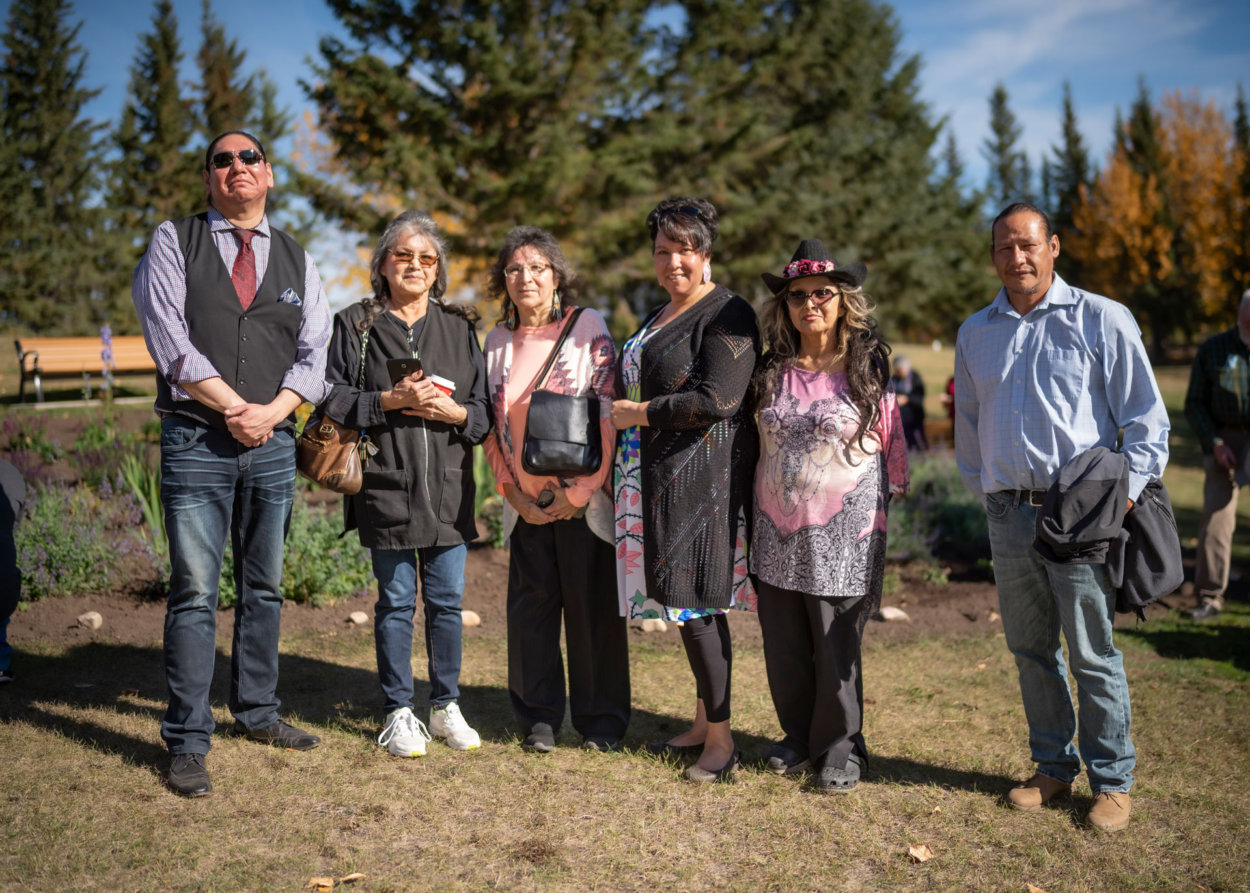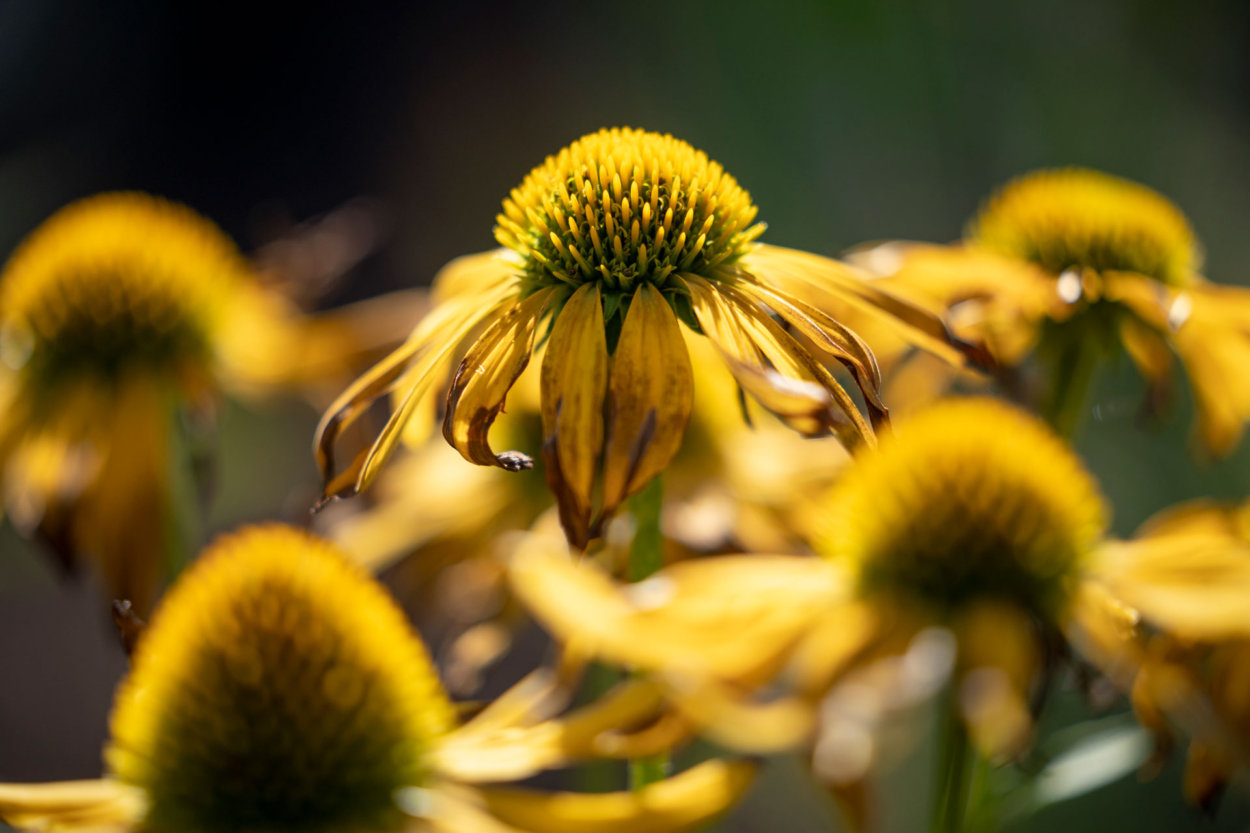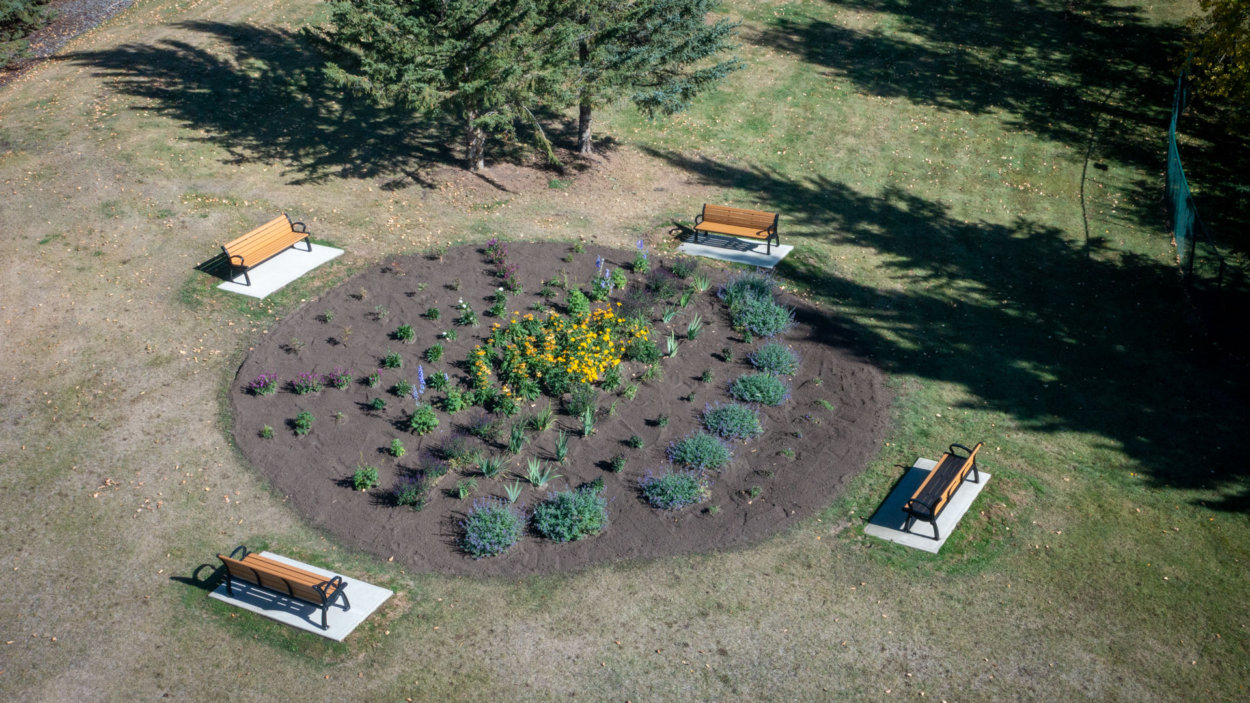Linda Bull Memorial Garden named in admiration for advocate who fought tirelessly for Indigenous Rights
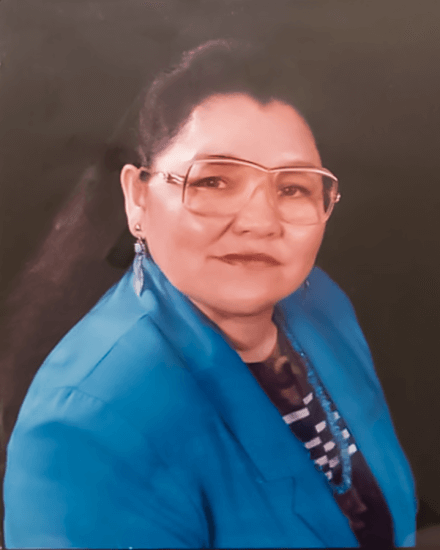
Linda Bull is remembered by her friends as a strong Nehiyaw (Cree) matriarch, mother, and academic. A recipient of the Order of Canada on May 1, 2002, Bull was recognized as an activist for peace and an advocate for Indigenous Peoples around the world.
"Our friend was loved and admired for her astuteness, kind teaching, and trailblazing. With clarity, generosity, and Nehiyawak assuredness and confidence, she changed minds and worlds," says Dr. Tracey Lindberg, an Indigenous Rights activist from the Kelly Lake Cree Nation and a friend of Bull's.
Speaking truth to Indigenous power
In 1986, Bull brokered an apology from the United Church of Canada to Survivors of residential schools. In 1991 she completed her master of education international/intercultural education at the University of Alberta with stories from residential school Survivors in her home communities of Saddle Lake and Goodfish. In 1992 she travelled to Ecuador to protest Columbus Day—where she spoke to thousands in Nehiyawewin (Cree) with an eagle feather in hand, about the Eagle and the Condor coming together. During her life, Bull spoke at more than 40 international peace, education, and human rights conferences.
Related: Nukskahtowin opens Linda Bull Memorial Garden and Bertha Clark-Jones O.C. Art Gallery
A humble life dedicated to family and friends
The Linda Bull Memorial Garden immortalizes the colourful, vibrant, and resilient spirit of a woman who loved her family dearly—a family she welcomed many different people into. A children's garden and the flowers grown in Bull's name were chosen to reflect the chaotic colours of life. Catnips, daisies, larkspur, and coneflowers grow healthy and strong like the children Bull dedicated her life to.
"It is fitting we honour Bull with her relatives—plant being—and acknowledge that she cut the path allowing Dr. Maria Campbell, Priscilla Campeau, and Ivy Lalonde to continue the exceptional work she started," Lindberg says.
Tanya Fontaine Porozni of Reconciliation St. Paul, a grassroots community group improving relationships between Indigenous and non-Indigenous people, wrote a story in 2017 about Bull's life. One story, told to her by Bull's sister Joyce Wood, exemplified Bull's humble nature:
"Linda was the master of ceremonies at an important event held at the Jubilee Auditorium in Edmonton. There was a reception beforehand and people were mingling. According to Joyce, Linda liked to wear long skirts and shawls and she always dressed up when she went out. Maybe because she was wearing a black skirt, a man mistakenly thought Linda was a waitress and asked her to bring him some tea. This was funny because Linda was the main speaker at the event. Nevertheless, she served him his tea. 'She was humble that way and courteous,' said Joyce. 'She knew who she was-she didn't need to tell him she was important.'"
A passionate defender of Turtle Island
Bull loved nature. She planted a garden every year, picked berries, and canned in preparation for the winter. She went back to her communities every year to fish with friends and can salmon. She composted and recycled everything she owned—Bull always kept Mother Earth in mind, conscious of everything that had been done to Indigenous Peoples and Turtle Island.
"As her family, we are truly honoured and humbled that Linda received a prestigious award of this magnitude," Wood says. "Naming a children's garden after her … Linda loved children. She loved everyone and lived life to the fullest."
As her family, we are truly honoured and humbled that Linda received a prestigious award of this magnitude.
Joyce Wood, sister of Linda Bull
Growing up at Goodfish Lake, the sisters spent a lot of time going back and forth from their house to their aunt and uncle's, doing chores for their parents. Both families had long driveways and a grove of trees separating the houses with a creek on each side of the road. Recalling a story from their youth, Wood remembers Bull's kind and loving nature.
"As Linda was walking down the road, she heard galloping hooves behind her," Wood says. "A horse was running towards her, so she started running. The horse caught up to her, but Linda feigned bravery while shaking in her shoes. The horse put its nose on top of her head and walked with her like that the rest of the way. People and animals alike loved Linda."
